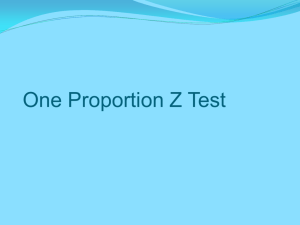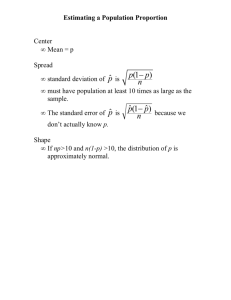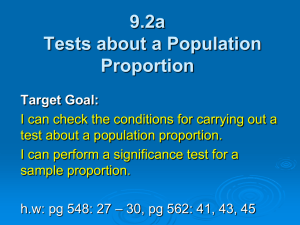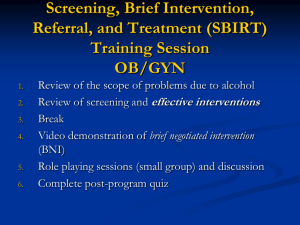proportion z-test
advertisement
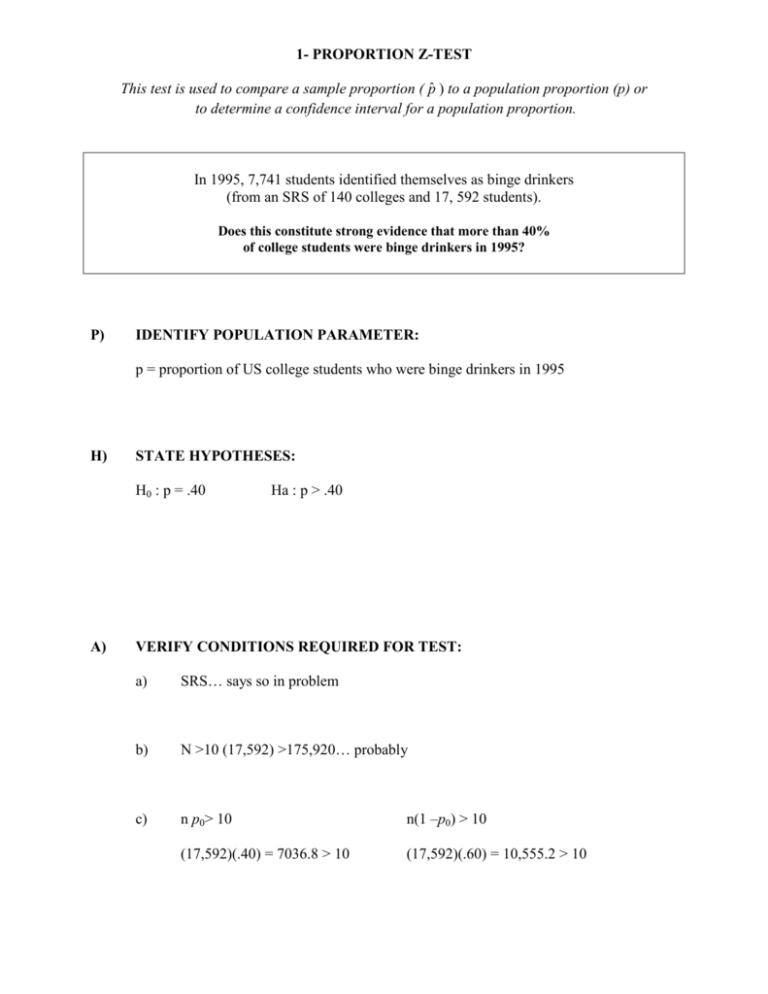
1- PROPORTION Z-TEST This test is used to compare a sample proportion ( p̂ ) to a population proportion (p) or to determine a confidence interval for a population proportion. In 1995, 7,741 students identified themselves as binge drinkers (from an SRS of 140 colleges and 17, 592 students). Does this constitute strong evidence that more than 40% of college students were binge drinkers in 1995? P) IDENTIFY POPULATION PARAMETER: p = proportion of US college students who were binge drinkers in 1995 H) STATE HYPOTHESES: H0 : p = .40 A) Ha : p > .40 VERIFY CONDITIONS REQUIRED FOR TEST: a) SRS… says so in problem b) N >10 (17,592) >175,920… probably c) n p0> 10 n(1 –p0) > 10 (17,592)(.40) = 7036.8 > 10 (17,592)(.60) = 10,555.2 > 10 T) PERFORM TEST USING a) TABLE C: Calculate z test statistic and compare to critical z* (or use normalcdf) z= pˆ − p 0 p 0 (1 − p 0 ) n = 10.84 The largest z* in Table C is 3.291… since 10.84 > 3.291, p < .0005 DISTR ---> normalcdf (10.84, 100) = 1.14 x 10-27 min, max b) CALCULATOR: STAT TESTS 1-Prop Z Test p = 1.17 x 10-27 = 0 X = # of successes S) STATE CONCLUSION: There is extremely strong evidence to reject H0 (P-value almost 0) and conclude that more than 40% of college students in the US were binge drinkers in 1995. CONFIDENCE INTERVAL (Use PAIS): After checking for normal distribution [n p̂ > 10 n(1 – p̂ ) > 10], a 95% confidence interval for the proportion of college students who have engaged in binge drinking can be found using: STAT TEST 1-Prop Z Int = (.433, .447) We are 95% confident that between 43.3% and 44.7% of college students were binge drinkers in 1995.


